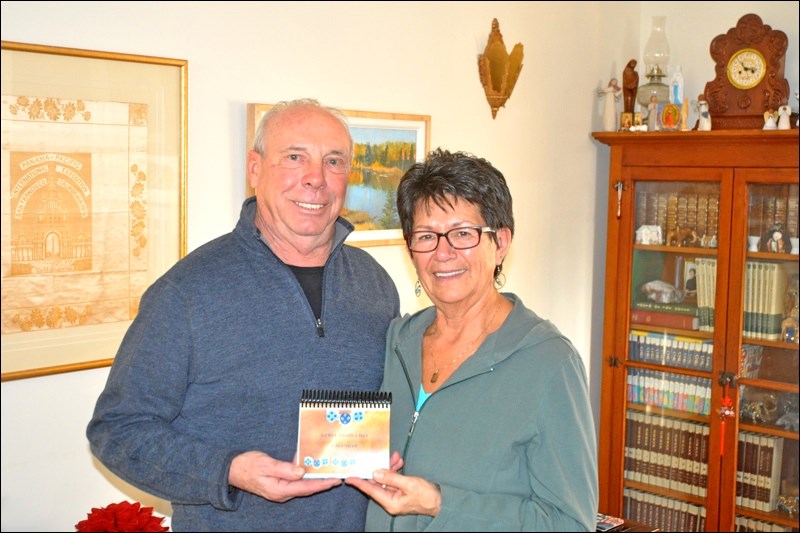A North Battleford couple is hoping their new Cree-word calendar encourages reconciliation.
Last year, Liz and Les Hurlburt made a calendar featuring Cree words with their English translations and a pronunciation guide. Liz taught Cree at St. Mary School and Les is familiar with the language. They looked through dictionaries and found words for different days.
The Hurlburts were featured on CBC radio last year and saw increased demand for their calendar after the radio appearance and a published article.
“Then there were so many people phoning us after we were on the radio, that we decided to make [a calendar] we would produce for the public,” Les Hurlburt said.
This year, the Hurlburts revamped the calendar and are selling them at an upcoming event.
Differences from the new calendar compared to last year’s include a new cover featuring a beadwork pattern on the front by Liz’s mother Marguerite Kimbley, and blue pages to match the beadwork.
The new calendar is also a perpetual calendar. A perpetual calendar has dates including days and months but not years, so one can flip through the calendar over again once a year is finished.
Words in the calendar are organized by theme, such as a winter theme in January, and a spring theme during springtime.
Cree’s relation to English or French, Liz said, would be like the country’s official languages relation to Chinese. Yet speakers who understood both Cree and French formed their own language: Michif.
Liz spoke Michif. Before teaching Cree, Liz said, she had to learn “the true Cree language,” although she said she already knew much of it due to Cree’s similarities to Michif.
Cree occasionally uses pre-existing words and concepts to form other words. According to the Hurlburts, the Cree word for table is translated as “eating board.” “Hummingbird” is “bee bird.” “Horse” is “big dog.”
Before the prominence of homogeneous English in Canada, Cree and other languages spoken in the territory could be compared to variations of English within England, Liz said. Different Cree dialects include Plains Cree, Woods Cree, Swampy Cree, Moose Cree and Atikamekw Cree.
The Plains Cree prominent in this area, Liz said, and according to which the calendar is written, is referred to as “Y” dialect.
Another important feature of Cree is it takes into account what the language considers to be animate and inanimate. Romance languages distinguish words according to gender, and word endings alter according to gender. In Cree, a rock is considered animate, while a book is considered inanimate, and endings differ accordingly.
Factors such as residential school, Liz said, explain why many people no longer speak Cree.
Liz said her experience at residential school was different from her parents’ as she went to day school and could stay home at night. Her parents lived at the residential school and weren’t allowed to return home every night.
The Hurlburts say their efforts are directed toward reconciliation, Les said, and to “expose people to, and have an awareness of and appreciation of the language of the Indigenous people around here.”
A calendar sale will take place Friday, Nov. 23 at St. Joseph Calasanctius Church Hall from 7 p.m. to 10 p.m.



